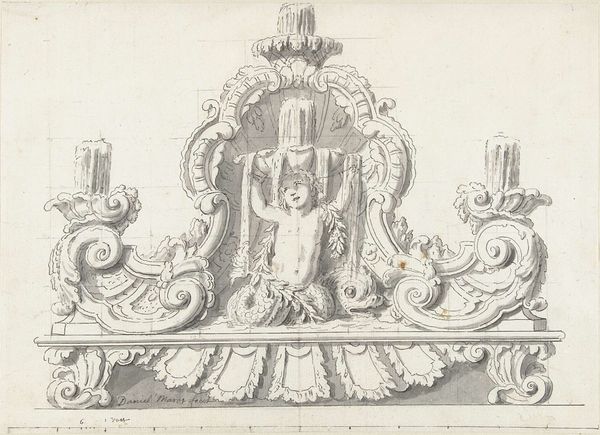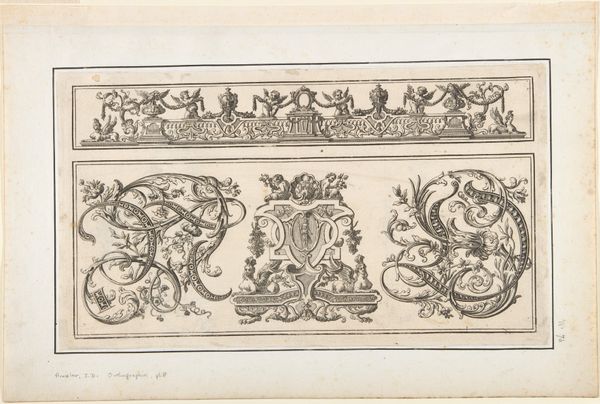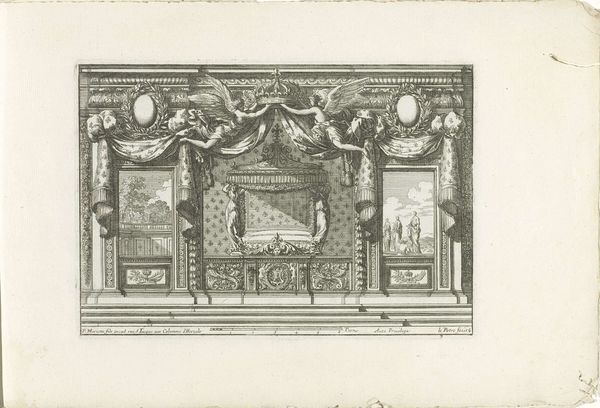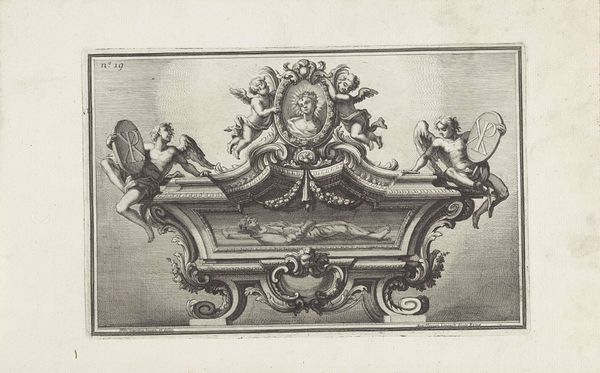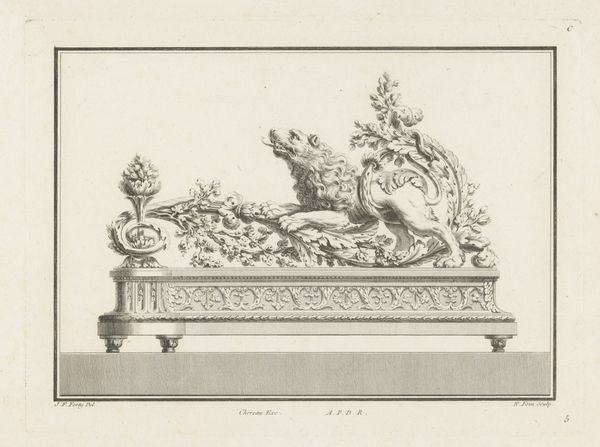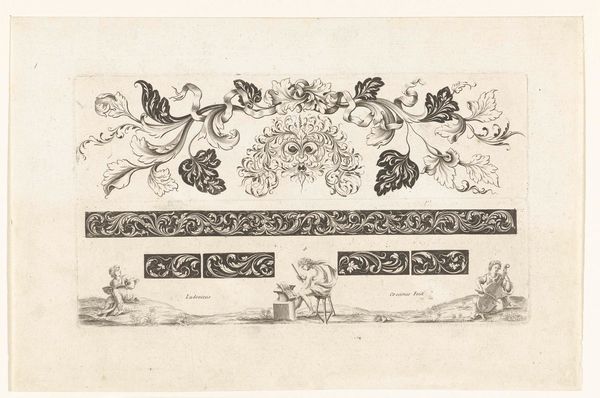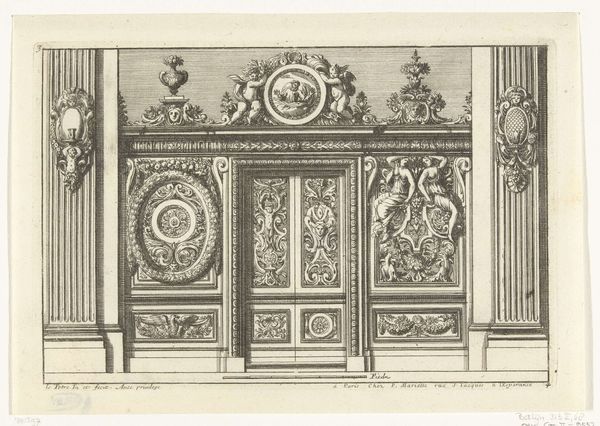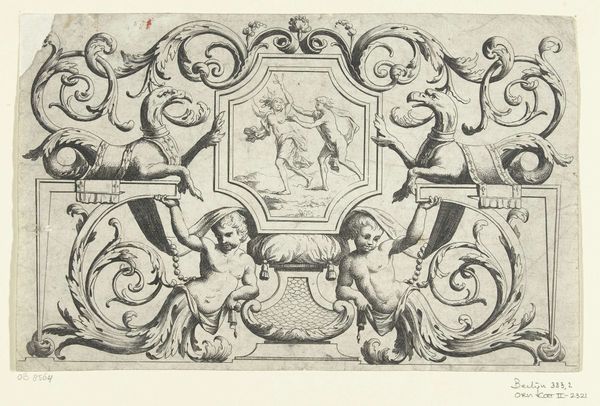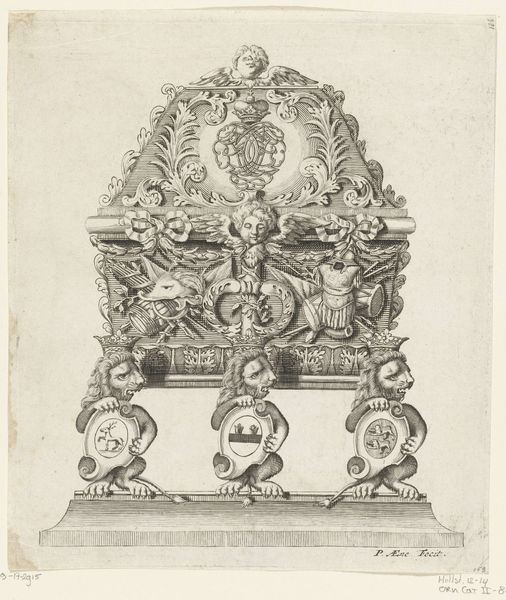
Sarcofaag van Hendrik Casimir II: zijkant gedecoreerd met wapentrofeëen 1680 - 1700
0:00
0:00
drawing, metal, ink, sculpture, engraving
#
drawing
#
baroque
#
pen drawing
#
metal
#
ink
#
geometric
#
sculpture
#
history-painting
#
engraving
Dimensions: height 205 mm, width 340 mm
Copyright: Rijks Museum: Open Domain
Curator: This intricately detailed drawing presents the side of the sarcophagus of Hendrik Casimir II, dating back to the late 17th century, sometime between 1680 and 1700. The piece seems to have been created with pen and ink, perhaps as a study for a metal or sculpted version. Editor: My first impression is just how ornate it is. The level of detail, especially considering the medium, is really remarkable. It gives the sense of being densely packed with imagery, a visual feast, though quite somber. Curator: The elaborate decoration, overflowing with heraldic symbols and militaristic trophies, certainly aligns with the conventions surrounding the glorification of rulers and military leaders in the Baroque period. We see the aesthetic deployed as an ideological tool here, attempting to legitimize power and lineage through visually imposing symbols of status and authority. Editor: Precisely. If we consider just the formal arrangement, the symmetrical structure—the repetition of grotesque masks alternating with orderly military drums, helmets, and body armors—creates a fascinating tension. These playful elements almost temper the overt symbolism of power, inviting a nuanced reading of mortality and majesty. Curator: Indeed. The very presence of cherubic figures alongside skulls seems intended to invite such contemplation. But I think it's vital to note that depictions of death, particularly on tombs, often served a didactic purpose in Baroque culture. These were overt reminders of mortality, of memento mori aimed at inspiring reflection among the aristocratic elites about their responsibilities toward the state. Editor: The drawing's reliance on line—crisp, meticulous line—produces such sharp, distinct forms. I think the interplay between light and shadow heightens the object's dimensionality. You can almost imagine running your hand over the sculpted relief. It is not only symbolic but tactile. Curator: It would be easy to dismiss the style as overly ornamental from a modern perspective, but viewed within its historical context, these visual strategies become significant reflections of period beliefs about governance, power, and legacy. It is how elites controlled perception of their role. Editor: True. The more we look, the more these detailed carvings reveal how deliberately shaped these perceptions of power and afterlife were in the baroque period. Curator: Absolutely. Hopefully our insights helped you think more deeply about the historic meaning. Editor: And to view with greater consideration such artful elements within it.
Comments
No comments
Be the first to comment and join the conversation on the ultimate creative platform.
